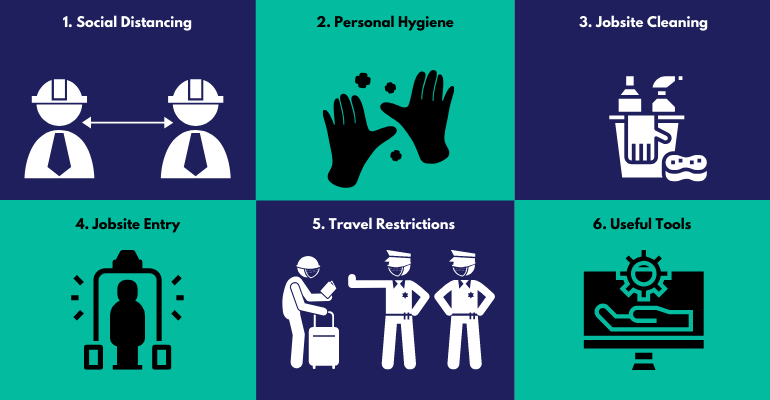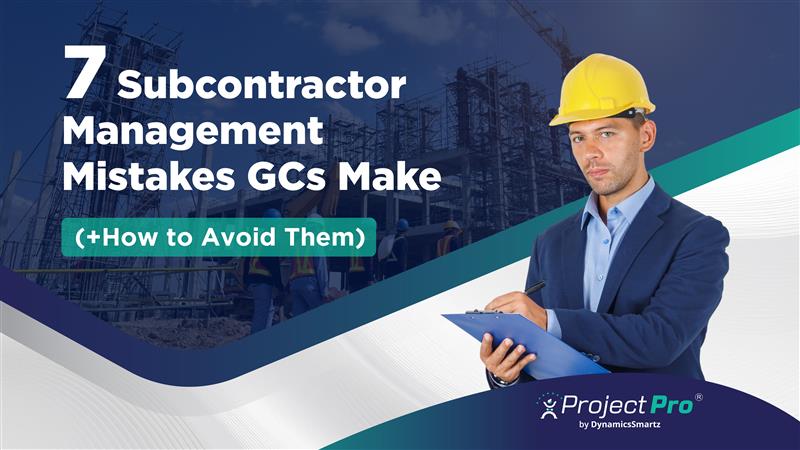COVID-19: Planning & Preparation

The Preparedness Plan Construction Industry Needs to Follow
With efforts made to practice safety at the construction sites to the shutdowns, the construction industry is completely caught in crosshairs with COVID-19. The Global pandemic has brought all the Federal and State governments on their knees with a massive effect made to the economies and health.
Amid the entire existing crisis, the construction industry has witnessed some serious impact on the projects with some being halted or suspended while others struggling to keep up with work and safety standards. Though internal factors related to taxes, expenses, and documents could be managed using construction accounting ERP software, certain external factors are required to be controlled.
However, recognizing the need for planning and preparation, we have worked to create a 6-step prevention plan, an exposure protocol, and a section containing all the essential information related to construction during COVID-19. Let’s dive in.
The 6-Step Prevention Plan

- Social Distancing
The first step to prevention which construction sites or the contractors need to follow is the social distancing. All the employees and workers at the site should be strictly ordered to follow the 6-foot distance rule. Moreover, it is essential that open meetings should be promoted, rather than gathering people in confined meeting rooms.
Also, the workers must be informed to avoid buying food from trucks or practice communal sharing of food or water bottles. Apart from this, any process or operations which do not require employees to visit the job site should be worked using virtual tools.
Besides this, the 6-feet rule should be followed even during the lunch hours or the seating at the meeting area or lunchroom should be rearranged to encourage social distancing. Also, adjacent facing should be promoted rather than direct face to face contact during meetings or lunch breaks.
-
Personal Hygiene
The next step which construction staff needs to follow is to improve their approach towards personal hygiene. Since the chances of contagion are always persistent, the staff should practice washing hands frequently using soap and water for 20 seconds.
Moreover, the sneezes should be covered using a tissue or elbow to avoid respiratory droplets travel through the air. It is equally important that tissues used while sneezing should be disposed and clothes should be washed the same day.
The construction sites can have a training session with staff under which any contact or touch made to eyes, mouth, or nose should be prevented. All the employees should be provided with hand sanitizers that contain more than 60 percent of alcohol. Also, the tools at the site should be kept separated to prevent sharing and must be sanitized frequently to avoid any chance of infections.
-
Jobsite Cleaning
The site supervisors or the contractors should recognize the need for Jobsite cleaning. This must include all the common areas, offices, worker welfare zones, and trailers. All in all, the commonly touched sites, surfaces, and items should be cleaned properly. It should be ensured that hand washing spots must be created at every common to use areas, along with all essential cleaning material. Here we have gathered a list of areas which you should have at your attention for cleaning:
- Coffee Machines & Microwaves
- Door Handles
- Furniture & Fixtures
- Kitchen, Lunch area, Welfare rooms
- Machines & Office Equipment
- Restroom (soap dispenser, flush handles, locks, faucets, etc)
- Switches
- Steering Wheels, Levers, and Tools
- Staircase & Handrails
- Jobsite Entry
Jobsite entry is the most significant factor to accommodate in your prevention plan. It can work as a line of defense against COVID-19 and maintaining safety. It is suggested that Temperature Checks must be done at the entry points of the site to detect any chances of contagion.
However, conducting temperature checks should involve the utilization of full-face shield, infrared thermometers, disposable gloves, and other safety gear.
For workers who are feeling sick or are having flu-like symptoms such as fever above 100.4 Degrees, Cough, and are facing shortness of breath, they should immediately notify the authorities, seek medical attention, and contain them at home.
-
Travel Restrictions
For construction firms which has expanded across the state, country, or international borders, travel must be strictly prevented. Any type of emergency should be dealt with virtually and there must be no encouragement of physical meetings after traveling.
In case, the employee needs to travel for any personal work or essential purpose, they should first have permission from the local authorities or jurisdiction. Moreover, the worker should inform the supervisor or their immediate managers to notify upon the travel they have made.
It is necessary that all the travel guidelines issued by the CDC should be followed while traveling to avoid the carrying of the virus from one place to another.
-
Useful Tools
To improve safety at the site, construction sites and workers must take the best use of technology and tools. This must include the use of virtual meeting tools like Microsoft Teams or GoTo Meeting for any important subjects of discussion. Also, accounting software for construction firms could be used to keep track of project progress and activities.
Secondly, the construction giants who have a large number of people working at the site should try hiring Third-party Temperature Testing teams as a part of safety. In addition, the orders of Federal or International Health agencies like WHO, CDC, and OSHA should be taken into consideration. Also, it should be ensured that all the cleaning material and products used must be standardized for safety, either it is the disinfectants, soaps, sanitizers, or other cleaning material.
The Exposure Protocol
-
For Those Showing Symptoms
If a worker or employee is having symptoms that may signal the presence of COVID-19, the worker should immediately notify the work authorities or Go Home/Stay at Home and seek medical attention.
The test must be conducted and the person must self-quarantine them at home for 14 days. The workers should only return to the job when the symptoms are no longer visible and medically cured.
-
For Those Who Had Close Contact With Someone Showing Symptoms
If someone is found to have close contact with someone exposed to COVID-19 at work or family, the worker should immediately notify the staff supervisor or manager.
Following that, the test should be conducted and the person should self-quarantine them for 14 days post-test. If the person who had close contact did not develop any symptoms or is cured, he/she may return to work.
-
For Someone Who Had Confirmed Exposure To Novel Corona Virus
Either it is someone tested positive or someone likely or got infected by coming into close contact with COVID-19 patient, should be asked to leave the site premises immediately.
Once you are informed about a person with a confirmed case, make sure you gather all the facts about
- When the person was infected?
- Where the person was infected?
- Were there any symptoms?
- If the person has traveled to any other site or place?
Moreover, anyone who had close contact with the suspected patients should be identified to avoid any further spread of contagion. Also, the close contacts should be informed to leave the site and quarantine themselves for 14 days until they are confirmed to be healthy for returning at work.
Note: in case of extreme circumstances, make sure the closing of the site must not be resisted. Also, all the necessary actions for risk management and health safety should be applied immediately.
What Else You Need To Know
-
Stay Prepared with Jobsite Demobilization Guidelines
In case, the area under which the construction project or site comes has been suspected to be severely affected, there can be shutdown orders by the Government too. Thus, considering the state of emergency, there must be a Jobsite Demobilization guide in place to deal with extreme situations.
-
Make sure you have a full-proof Return to Work Plan
First of all, the operations which could be carried or conducted through virtual mediums should be taken to Tele-working. Also, there should be a provision for ‘no paperwork required’ if the workers who were Tele-working or potentially exposed are medically cured to return to work. However, in the case of the person who is treated for COVID-19, there should be a 72 Hour retention period in which if a person develops no sign of fever or other symptoms could be identified as medically cured. Besides, a no paperwork policy could also be implemented for such staff to ensure an easy return to work.
Work on IT Guidelines and Spread of Rumors at Social Media
Last but not least, make sure the construction site staff and workers must be guided well on IT guidelines. This should include no discussion of infections at the site on social media to avoid a panic situation.
Moreover, any information related to the construction firm or project should be kept secured and private when using virtual sources like Construction Accounting ERP software to connect or work on the project.
Stay Safe! Take Care!
Keep your construction business on track by keeping a check on all the accounting and customer data with ProjectPro. Schedule a demo today !




.jpg)


